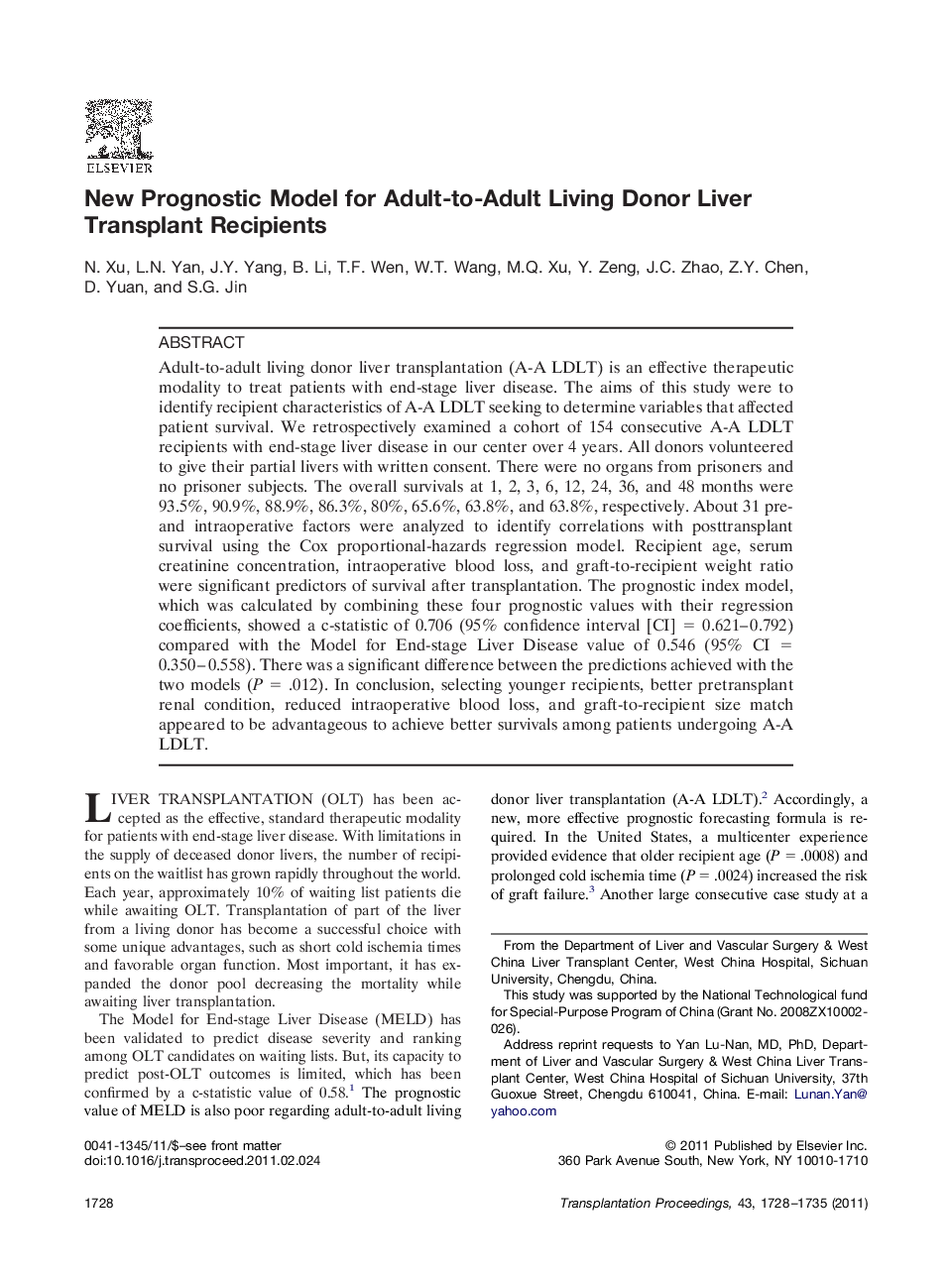| Article ID | Journal | Published Year | Pages | File Type |
|---|---|---|---|---|
| 6249311 | Transplantation Proceedings | 2011 | 8 Pages |
Adult-to-adult living donor liver transplantation (A-A LDLT) is an effective therapeutic modality to treat patients with end-stage liver disease. The aims of this study were to identify recipient characteristics of A-A LDLT seeking to determine variables that affected patient survival. We retrospectively examined a cohort of 154 consecutive A-A LDLT recipients with end-stage liver disease in our center over 4 years. All donors volunteered to give their partial livers with written consent. There were no organs from prisoners and no prisoner subjects. The overall survivals at 1, 2, 3, 6, 12, 24, 36, and 48 months were 93.5%, 90.9%, 88.9%, 86.3%, 80%, 65.6%, 63.8%, and 63.8%, respectively. About 31 pre- and intraoperative factors were analyzed to identify correlations with posttransplant survival using the Cox proportional-hazards regression model. Recipient age, serum creatinine concentration, intraoperative blood loss, and graft-to-recipient weight ratio were significant predictors of survival after transplantation. The prognostic index model, which was calculated by combining these four prognostic values with their regression coefficients, showed a c-statistic of 0.706 (95% confidence interval [CI] = 0.621-0.792) compared with the Model for End-stage Liver Disease value of 0.546 (95% CI = 0.350-0.558). There was a significant difference between the predictions achieved with the two models (P = .012). In conclusion, selecting younger recipients, better pretransplant renal condition, reduced intraoperative blood loss, and graft-to-recipient size match appeared to be advantageous to achieve better survivals among patients undergoing A-A LDLT.
